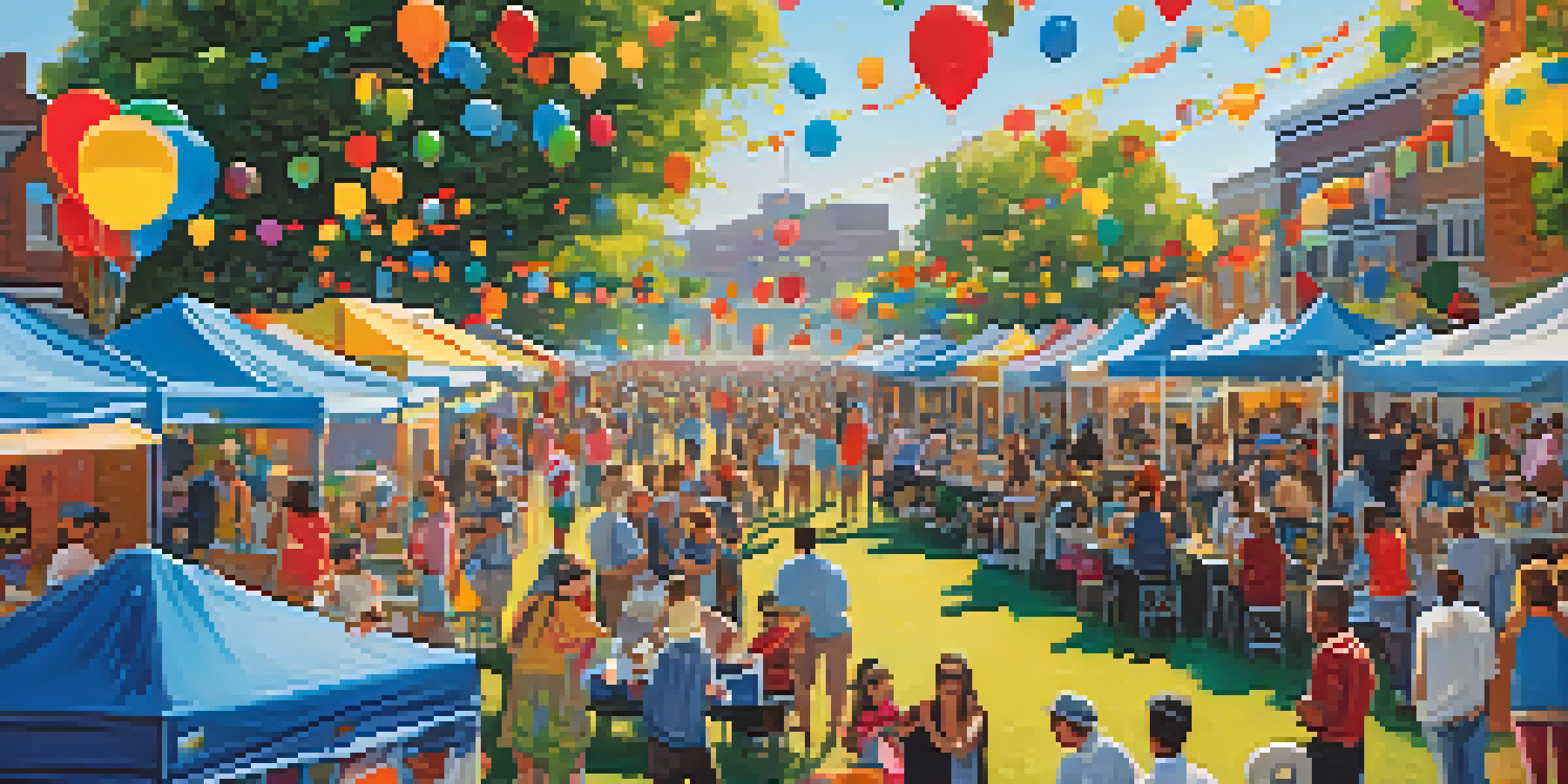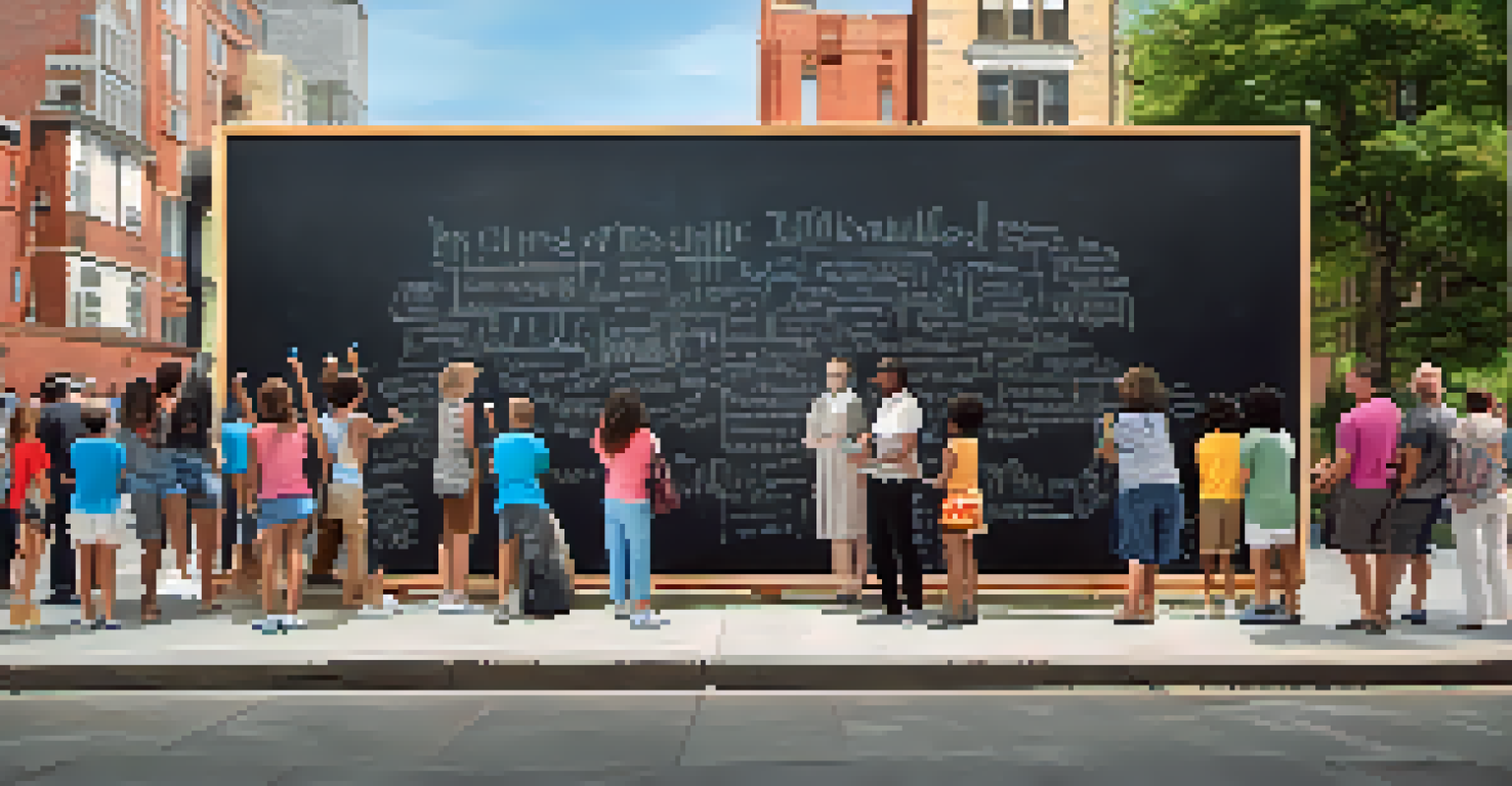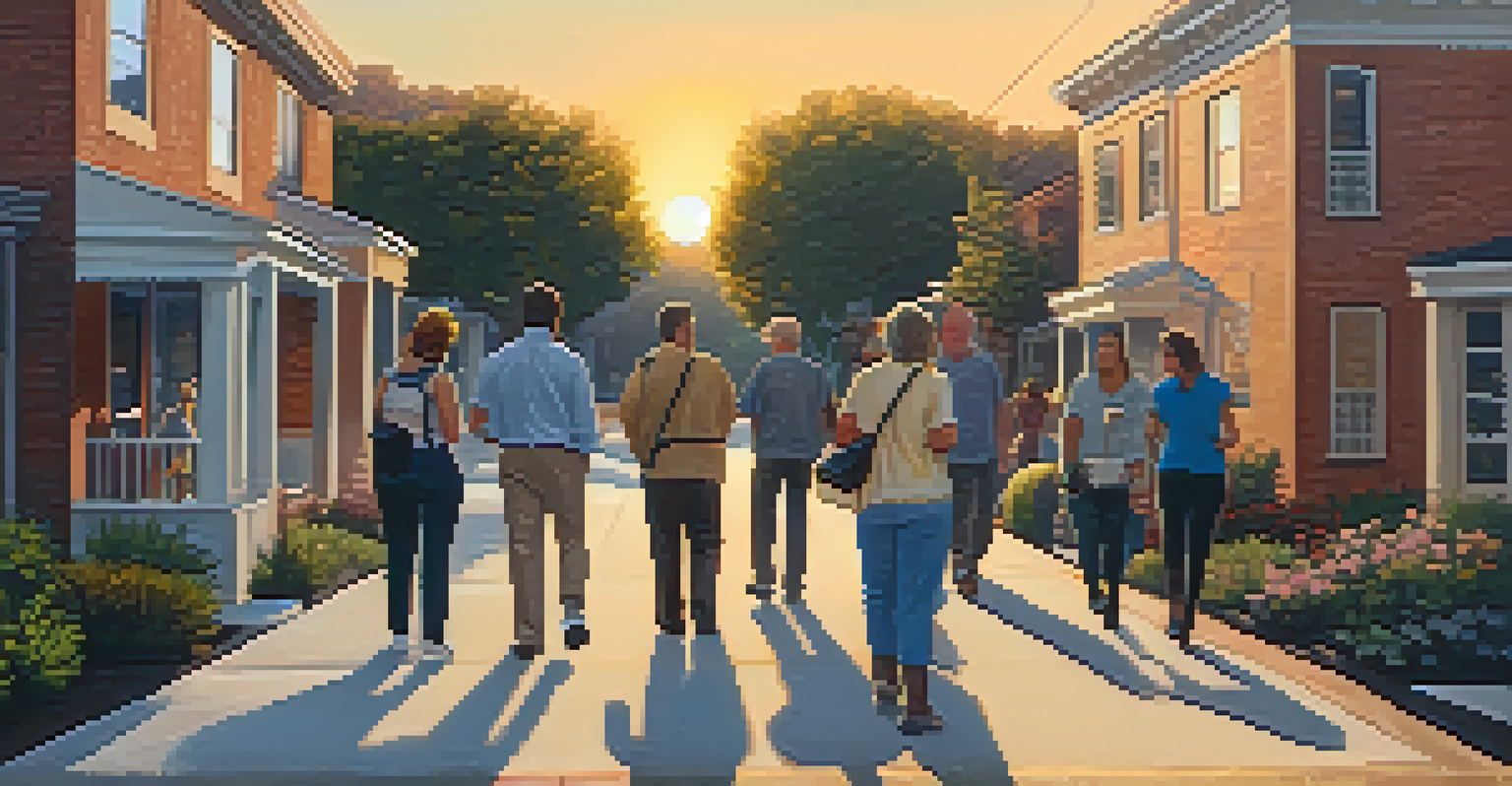Exploring Public Art Installations: Community Engagement Ideas

Understanding the Importance of Public Art in Communities
Public art installations breathe life into our neighborhoods, transforming ordinary spaces into vibrant, engaging environments. They serve as a reflection of community values and cultural identity, often sparking conversations among residents. When people interact with art in their daily lives, it fosters a sense of belonging and pride in their surroundings.
Public art is a way of making art accessible to everyone, offering a platform for community expression and engagement.
Moreover, public art can act as a catalyst for community engagement, encouraging social interactions and collaborations. For instance, a mural depicting local history can inspire storytelling and dialogue among viewers. This shared experience not only enhances appreciation for the art itself but also strengthens the community bond.
Ultimately, understanding the role of public art helps us appreciate its potential to create inclusive spaces and promote community well-being. As we explore ways to engage with public art, it's essential to keep these underlying values in mind.
Organizing Community Art Walks for Local Engagement
One effective way to engage the community with public art is by organizing art walks. These guided tours can showcase local installations, allowing residents to learn about the artists and the stories behind each piece. By walking together, participants not only enjoy the art but also have the chance to connect with each other.

Art walks can be themed, focusing on specific styles, artists, or historical contexts. For example, a street art tour could highlight vibrant murals and graffiti, while a sculpture walk might emphasize three-dimensional works in parks. This variety keeps the experience fresh and encourages participation from diverse community members.
Engaging Events Boost Art Participation
Organizing art walks, workshops, and festivals creates opportunities for community members to connect and engage with local art.
Additionally, partnering with local businesses can enhance the art walk experience. Local cafes or shops can offer discounts or refreshments, creating a festive atmosphere that encourages attendees to linger and socialize after the tour.
Creating Interactive Public Art Projects for All Ages
Interactive art projects invite community members to participate actively in the creation process, making art a collective experience. For instance, organizers could set up a community mural where residents can contribute their own designs or colors. This not only allows for personal expression but also fosters collaboration among participants.
Art is not what you see, but what you make others see.
Another engaging idea is to install a chalkboard wall where people can write messages, draw, or leave quotes. This dynamic canvas can change daily, reflecting the thoughts and creativity of the community. It also encourages return visits, as each day brings something new.
By involving people of all ages in these projects, communities can cultivate a sense of ownership over their public spaces. The more individuals feel connected to the art, the more likely they are to care for and advocate for it.
Utilizing Social Media to Promote Public Art Engagement
In today's digital age, social media is a powerful tool for promoting public art and engaging the community. By creating dedicated pages or hashtags for local art projects, residents can share their experiences and photos, generating buzz and visibility. This online engagement complements physical interactions, allowing for a broader reach.
Encouraging residents to share their perspectives and stories related to public art can also create a sense of community online. For example, hosting photo contests or storytelling sessions on platforms like Instagram or Facebook can inspire participation and spark interest in current or upcoming art installations.
Feedback Shapes Public Art Projects
Gathering community feedback is essential for tailoring public art initiatives to meet residents' needs and interests.
Moreover, local artists can use social media to showcase their work and connect with community members. By sharing behind-the-scenes looks at their creative processes, they can foster deeper appreciation and engagement with their art.
Hosting Workshops and Events Around Public Art Themes
Workshops and events centered around public art can stimulate creativity and community involvement. For example, organizing painting workshops or sculpture classes can provide residents with hands-on experience and skills. This not only enhances appreciation for public art but also encourages individuals to explore their artistic talents.
Moreover, events such as artist talks or panel discussions can deepen the community's understanding of the art and its creators. These gatherings allow for dialogue between artists and residents, promoting a sense of connection and collaboration.
By offering a variety of workshops and events, communities can cater to different interests and skill levels. This inclusivity makes public art accessible to everyone, fostering a rich cultural landscape.
Engaging Schools in Public Art Initiatives
Schools play a vital role in fostering appreciation for art among young people. By incorporating public art initiatives into the curriculum, educators can encourage students to explore their creativity and connect with their community. Field trips to local installations or hands-on projects can ignite a passion for art that lasts a lifetime.
Collaborating with local artists to create school-based projects can also enhance students' learning experiences. For instance, painting a mural on school grounds can provide a platform for students to express their ideas and collaborate with their peers. This not only beautifies the school environment but also instills pride in their work.
Public Art Enhances Community Pride
Public art installations foster a sense of belonging and pride by reflecting community values and sparking conversations.
Furthermore, showcasing student art in public spaces can bridge the gap between schools and the community. Public exhibitions or installations can give young artists a voice and demonstrate the importance of art in their lives.
Gathering Feedback to Improve Public Art Engagement
Gathering community feedback is crucial for the ongoing success of public art initiatives. Surveys, interviews, or community forums can provide insights into what residents enjoy and what they would like to see more of. This input helps organizers tailor future projects to better meet the community's needs and interests.
Additionally, feedback fosters a culture of transparency and inclusivity. When residents feel their opinions matter, they are more likely to engage with public art and participate in future initiatives. It's a powerful reminder that art is not just for viewing but also for conversation and collaboration.

By continuously seeking feedback, communities can evolve their public art programs, ensuring they remain relevant and engaging. This cyclical process of input and adaptation can lead to more meaningful and impactful art experiences.
Celebrating Public Art with Community Festivals
Community festivals centered around public art can be a fantastic way to celebrate local creativity and engagement. These events can feature live music, food vendors, and activities that highlight the art in the area. A lively atmosphere encourages attendance and creates opportunities for community bonding.
During these festivals, organizers can include activities like art demonstrations, workshops, or guided tours to enhance the experience. Engaging local artists by having them showcase their work or lead activities can create a direct connection between the community and the artists.
Ultimately, a well-organized festival can cultivate excitement for public art and draw attention to its significance in community life. By celebrating art in this way, communities can foster a sense of pride and ownership over their shared spaces.